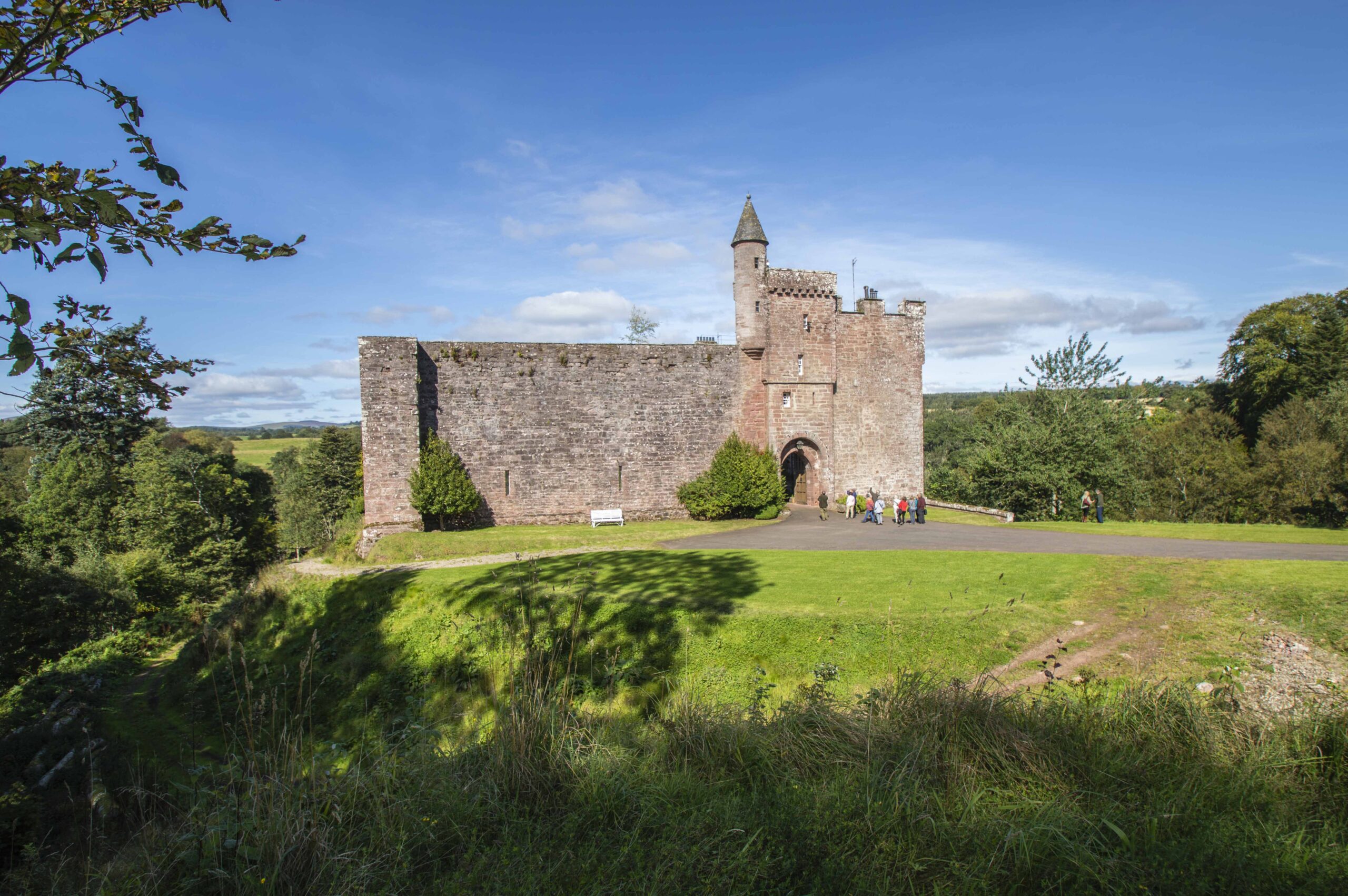Airlie Castle

Airlie Castle Details
Airlie Castle, privately occupied C18 mansion incorporating parts of a castle of the Ogilvies dating back to the 15th century
- Closest To: Alyth, Kirriemuir
- Access: No Access
- Grid Reference: NO293522
Airlie Castle occupies a steep sided promontory overlooking the junction of the Melgam water with the River Isla in Angus. The castle is within a private estate and not visible from any public roads. The main frontage of the castle, which was defended by a wide ditch, is largely that of the early 15th century courtyard castle of the Ogilvies, who were granted the lands of Airlie in 1432 by King James I.
The castle is not as it seems, however. At the eastern (right hand) end of the curtain wall, the gate and tower is of much later construction, and behind the curtain wall, a range of accommodation has been erected utilising the curtain wall. Behind the tower, a further domestic range has been constructed, and all remains of the western curtain and the northern end of the castle have been removed in order to permit a structured and landscaped garden area. What appears to be a defensive ditch is further away from the approach to the castle than we might expect – and LIDAR reveals that it is actually also landscaping work to provide access from the castle to the riverbank below.
In the reign of Alexander II, the lands of Airlie were associated with Hugh de Eure, the Bishop of St Andrews and the Abbey of Coupar – but this may only be a reference to the church lands. It may be that Airlie itself was a property of the earls of Angus, the crown, or even the Lindsays of Glenesk, we cannot be sure. However by the early 15th century they were held by the Crown, and James I rewarded the service of Walter Ogilvy of Lintrathen, his treasurer, with the lands of Airlie. The Ogilvie family rewarded the patronage of the crown with conspicuous loyalty, fighting against the Lindsay earl of Crawford in the reign of James II during the Douglas rebellion. During the build up to this cataclysmic event, Crawford assaulted the Ogilvie castle of Inverquharity in 1445, and this may have been the trigger behind the construction of Airlie in a more secure location. Walter’s grandson James was created the first Lord Ogilvie of Airlie in 1491, which would probably have resulted in further development at the castle, perhaps the erection of a “great tower”. The advance of the Ogilvies of Airlie was slow and it was not until 1639 that King Charles I created the eighth Lord Airlie an earl. The following year, Airlie was sacked by the Earl of Argyll, as recorded in the “Bonnie House of Airlie”. It ios usually said that the castle was not restored, and it was not until 1791 that the remains were substantially reordered and the mansion that can be seen today erected on the site. However it is shown on the Roy map of c1750 as an occupied property, which means that the destruction may have been overstated, unless Roy records a lost phase of development. Today the mansion at Airlie Castle remains occupied, and there is no public access.
Become a supporter of my work to access a more detailed history